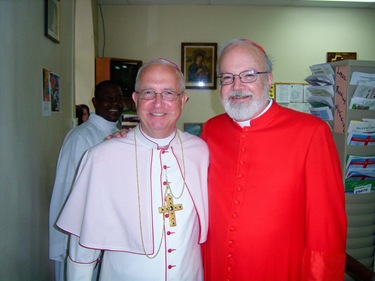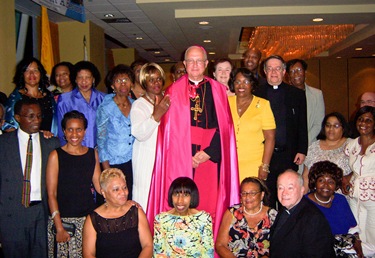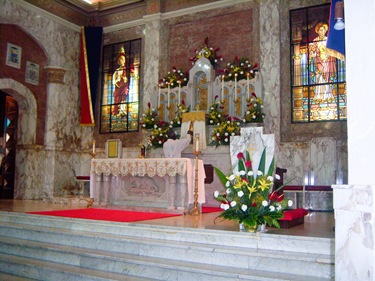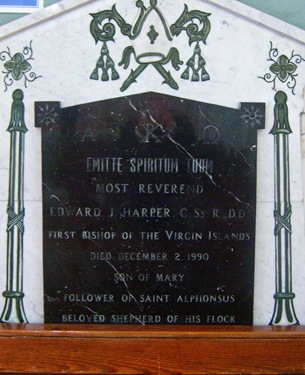Hello to you all!
I hope you had as enjoyable a Labor Day Weekend as I did. I visited with my family and celebrated a First Communion of a young boy from Colombia, whose family had been parishioners of mine when I was a priest in Washington.
On Tuesday, Father Jonathan and I flew down to the Virgin Islands for the installation of the new bishop of the Diocese of Saint Thomas, Herbert Bevard.
It had been a few years since I had been back, but it is always a joy to go there.
To participate in the consecration and installation of the bishop at Sts. Peter and Paul Cathedral reminded me of my own consecration and installation there 24 years ago.
Many people singing in the choir were singing in the choir when I was ordained a bishop there. There was the same sacristan, Mr. Knolly Beazer, who has been the sacristan at the cathedral for 50 years.
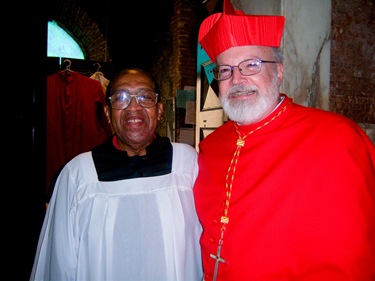
Knolly Beazer
All of the former bishops of the Virgin Islands were there except for Bishop Ed Harper, who died in 1990. I succeeded Bishop Harper in 1985, when he retired. Besides myself there was Bishop Elliot Thomas, who succeeded me, and Bishop George Vance Murry who is now the bishop of Youngstown, Ohio.
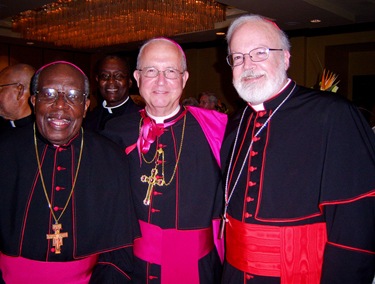
With Bishop Thomas and Bishop Bevard
It made me feel older to realize that I was the second bishop and now they are on their fifth!
Bishop Bevard was the pastor of a very vibrant African American parish in Philadelphia and it was great to see so many of his parishioners accompanying him, as well as other members of the city’s African American community attending the ceremony. There was also a large number of priests from Philadelphia as well as the archbishop, Cardinal Justin Rigali. Another guest was the rector of Chartres Cathedral near Paris, who is an old friend of Bishop Bevard.
Bishop Bevard with his friends and parishioners from Philadelphia
The cathedral was built around the same time as our own Holy Cross Cathedral in Boston, but it is much smaller and only fits about 300 people. The cathedral was very crowded and was beautifully decorated, especially with all of the native flowers they used.
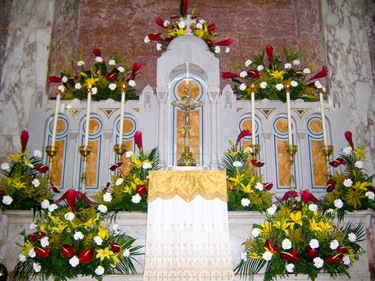
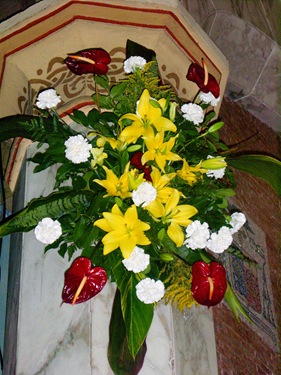
All the flowers are locally grown
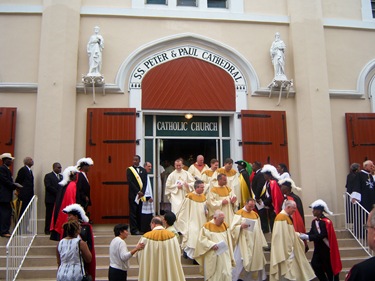
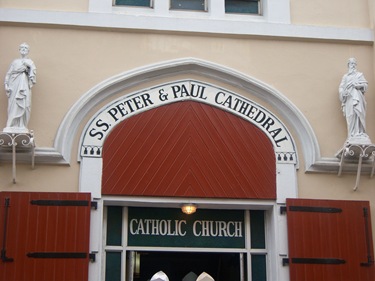
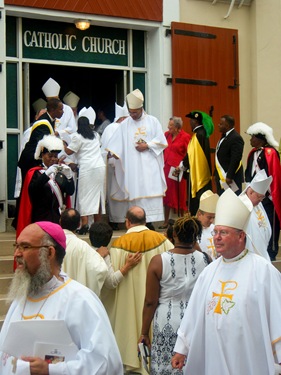
Afterwards, there was a gathering at Frenchmen’s Reef, where all the bishops and other guests came together to mark the occasion and honor the new bishop.
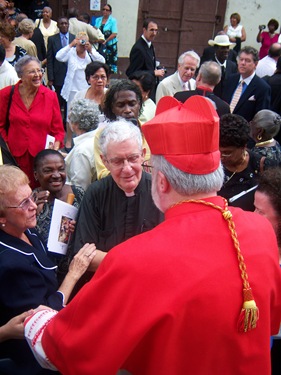
It was wonderful to be greeted by so many people and see so many familiar faces
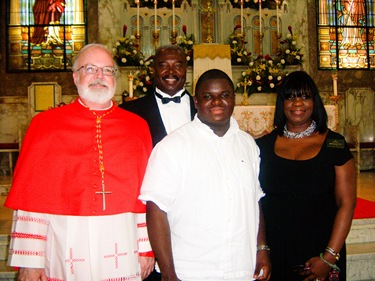
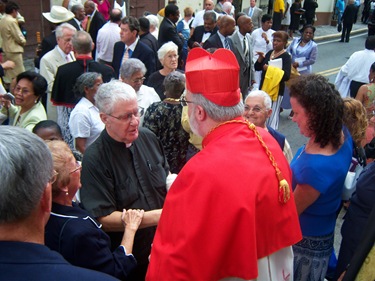
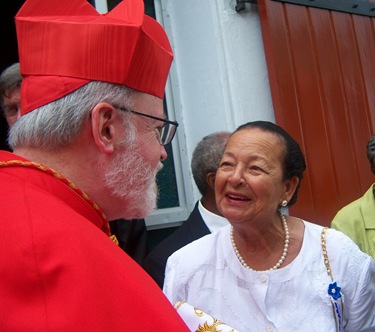
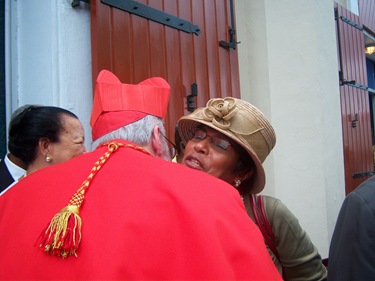
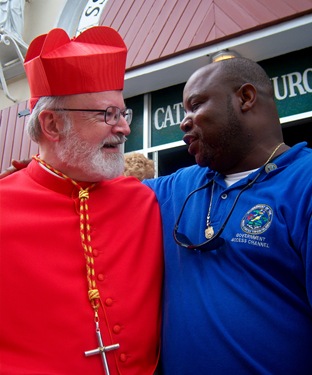
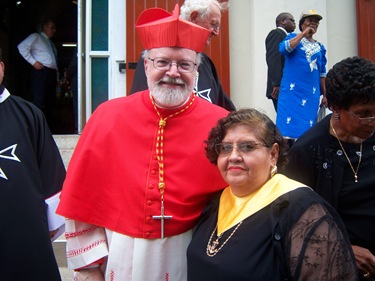
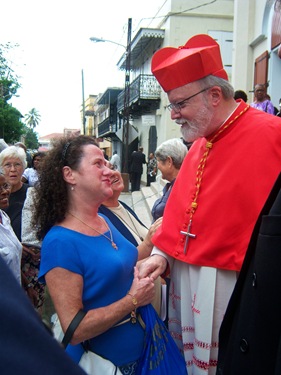
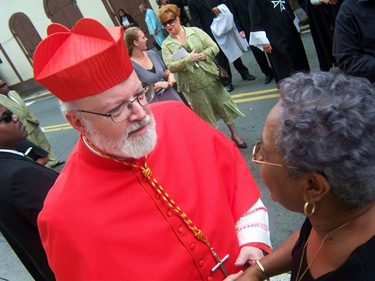
It is important to recognize Monsignor Jerome Feudjio, the pastor of Holy Family, who worked so hard organizing the installation.
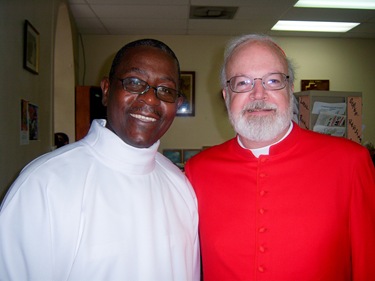
Monsignor Jerome Feudjio
The Virgin Islands are a very special place. The people have a great enthusiasm for their faith. Their liturgies are extraordinary and joyful celebrations.
One place I visited is what had been the bishop’s residence when I first went to the Virgin Islands. It was a house built by Bishop Harper on the top of the mountain, on an extraordinary piece of land donated to the Church by Madame Bloch, a Frenchwoman.
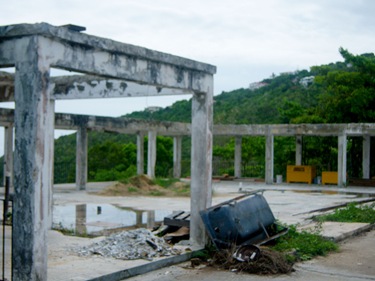
The house is still in ruins from the devastation left behind by the several hurricanes that have stricken the islands. The house has been rebuilt twice. I rebuilt it once and Bishop Elliot rebuilt it once again. Now it is just there in ruins.
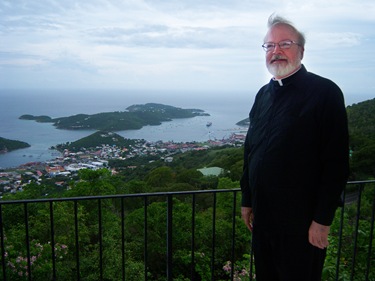
This was the view from my residence. Not too bad!
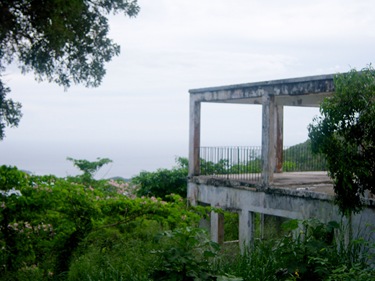
We also took pictures of what is now the Catholic Charities office. This little West Indian Danish building: it was my chancery—just a contrast from our brand new Pastoral Center that the late Tom Flatley made possible for us in Boston. I thought you’d enjoy seeing it.
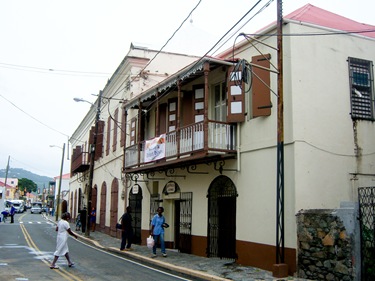
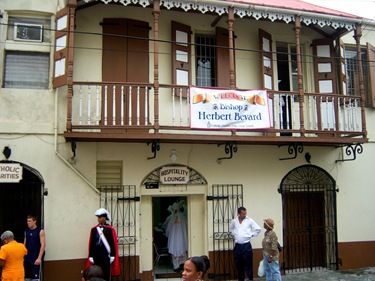
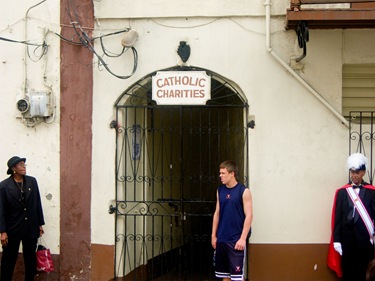
Of course, my visit was a chance to catch up with so many of the familiar faces from my time there. I was able to see many of the local priests I had ordained and meet with the deacons. There is such an active diaconate program on the Virgin Islands, started by Monsignor Michael Kosak and Sister Germaine years ago.
When I arrived, he was the only diocesan priest there, all the others were members of religious orders, so I made him a monsignor!
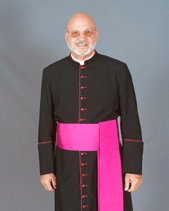
Monsignor Kosak
In fact, Bishop Thomas started in the diaconate program and then went on to the seminary. I ordained several priests in the Virgin Islands, but the first two priests I ordained are now bishops. Besides Bishop Thomas, there is Bishop Adalberto Martinez in Paraguay.
There are three islands with parishes, St. John’s, St. Thomas and St. Croix. The largest island is St. Croix, but the capital city, Charlotte Amalie, is on St. Thomas.
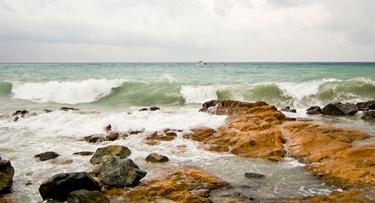
The islands were discovered by Christopher Columbus who named them after St. Ursula and the 11,000 virgins.
There have been seven flags flown over the islands since its discovery in the XV century. The first to own the islands were the Spaniards, followed by the English, the Dutch and the French. AFrench king gave them to the Order of Malta to rule.
The Order of Malta ruled them for a time and then turned them back to France. The king of France then sold them to the king of Denmark. They were the Danish West Indies for 350 years and then, around the time of the First World War, the Danes sold the islands to the United States. Although there were seven flags, the longest time was under the Danish flag, so most of the places are named for Danish monarchs. There are old Danish forts on the island.
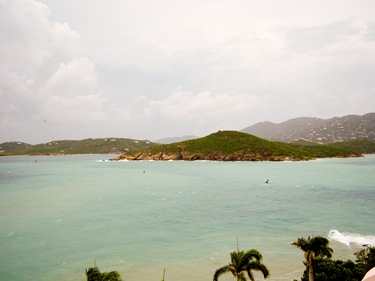
When the sun shines the water looks almost like it was painted blue
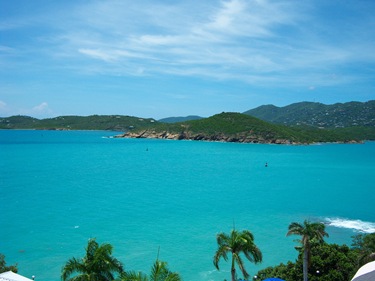
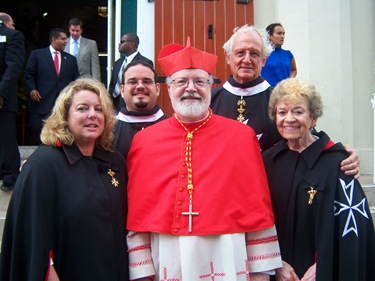
With members of the Order of Malta following the installation. The Order is a very important part of the history of the Virgin Islands
These are pictures from Drake’s Seat, where Sir Francis Drake, the pirate, would sit and look over the Magens Bay and watch for the Spanish galleons to sail through Drake’s Passage. From this mountain perch he would give the signal for his own ships to attack. Magens Bay is supposed to be one of the 10 most beautiful beaches in the world.
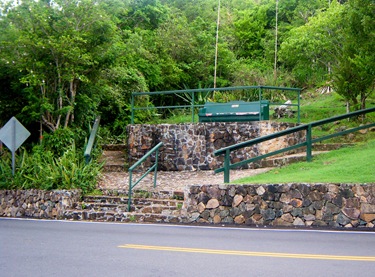
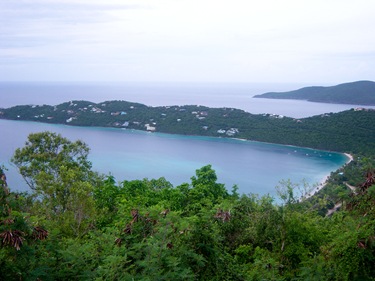
A view of Magens Bay
Columbus brought the Church to the Virgin Islands in 1493, but the real history begins with a French expedition which took the islands from Spain in 1650. Between that year and 1672, both French and Spanish priests served in the islands, even as control switched between the countries. It was in 1672 that the Danish West Indian and New Guinea Company took over the administration of the islands for the Danish Crown and Lutheranism became the official religion.
Eventually, the Danish government allowed Catholics to practice their faith, first in private and later in churches with relative freedom. The Church continued to grow despite hardships and disastrous fires that destroyed churches in 1804 and 1825.
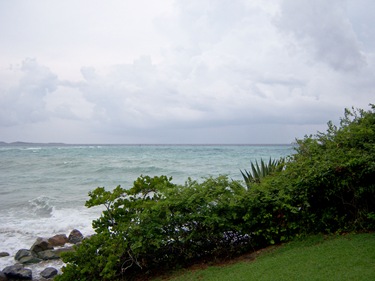
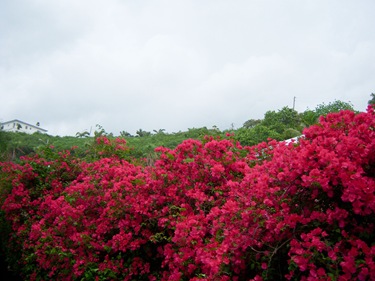
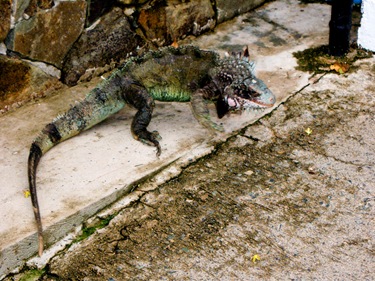
Some of the local wildlife
In 1856, Pope Pius IX invited the Redemptorists to take over the Church in St. Thomas and they have served God’s People there ever since. In 1960, the prelature of the Virgin Islands was established with Bishop Harper, a Redemptorist, as the first bishop. The prelature became a diocese in 1977.
Memorial plaque in memory of Bishop Harper in the cathedral
Bishop Harper was the first bishop to live on the islands and when I succeeded him, I became the first man ordained bishop on the island. My successor, Bishop Thomas, was the first diocesan priest to become the bishop there.
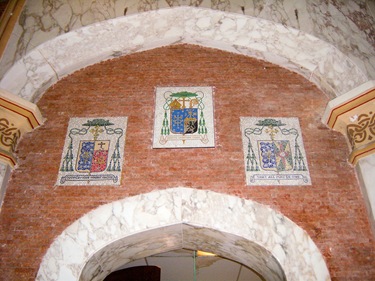
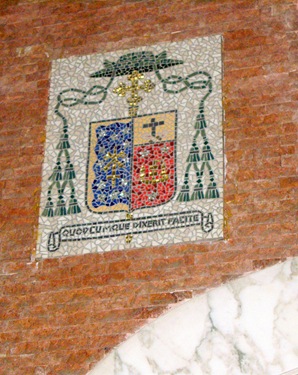
My coat of arms embedded into the facade of the cathedral
A great part of the joy from my visit to the Virgin Island was to see how the programs, such as the homeless shelters, especially the Bethlehem House, we had begun long ago have grown and flourished.
The diocesan newspaper, The Catholic Islander, with the leadership of Mary Conway, and the television stations we started are now considered permanent fixtures of the life of the Church in the islands. I should also mention Krysten Winter-Green, who was very instrumental in running the shelters and expanding them.
Until my next post.
In Christ,
Cardinal Seán

